Suriname
Welcome to Suriname
Welcome to Suriname, a captivating and often overlooked gem nestled on the northeastern coast of South America. Suriname offers a unique blend of lush tropical rainforests, vibrant cultural diversity, and colonial charm that promises an unforgettable travel experience. Whether you seek adventure in pristine natural landscapes or wish to immerse yourself in a rich cultural tapestry, Suriname welcomes you with open arms and warm hospitality.
Suriname is the smallest country in South America, bordered by Guyana, French Guiana, and Brazil. Despite its modest size, it boasts immense biodiversity and cultural richness. Approximately 90% of Suriname is covered by rainforest, making it a paradise for nature lovers and eco-tourists. The country’s population is a vibrant mosaic of ethnicities, including Indigenous peoples, Maroons (descendants of escaped African slaves), Creoles, Hindustani, Javanese, Chinese, and Europeans, which creates a fascinating cultural mix reflected in its languages, cuisine, and festivals. The capital city, Paramaribo, is a UNESCO World Heritage Site renowned for its well-preserved Dutch colonial architecture and lively markets. It serves as the cultural and economic hub, offering a gateway to Suriname’s diverse attractions. Beyond the city, the country’s vast natural reserves, such as Brownsberg Nature Park, Bigi Pan Nature Reserve, and Galibi Nature Reserve, provide opportunities for hiking, birdwatching, wildlife spotting, and witnessing endangered sea turtles nesting. Suriname’s rivers and waterways are integral to travel and exploration, with boat tours offering a unique perspective on the rainforest and its inhabitants. The country’s festivals, including jazz jamborees, Easter Carnival, and the exuberant Surifesta on New Year’s Eve, showcase its lively spirit and cultural heritage.
Why Visit Suriname?
1.
Untouched Natural Beauty and Wildlife: Suriname’s extensive rainforests, covering nearly 80-90% of the country, are home to an incredible variety of flora and fauna, including rare species like jaguars, Amazon river dolphins, and leatherback sea turtles. The country’s national parks and reserves are perfect for eco-adventures, birdwatching, and river excursions that immerse visitors in pristine environments.
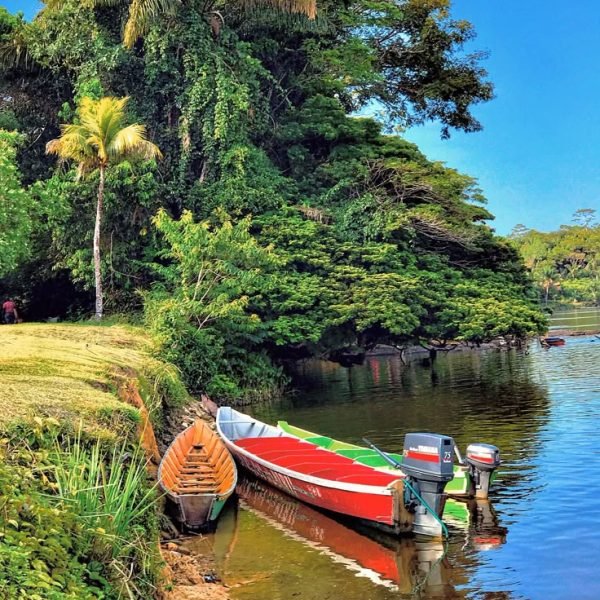
2.
Rich Cultural Diversity and History: Suriname’s multi-ethnic society offers a unique cultural experience. Visitors can explore indigenous and Maroon villages, enjoy diverse culinary traditions blending African, Asian, and European influences, and wander through Paramaribo’s historic streets lined with colonial wooden buildings. The country’s festivals and markets provide vibrant insights into its cultural mosaic.
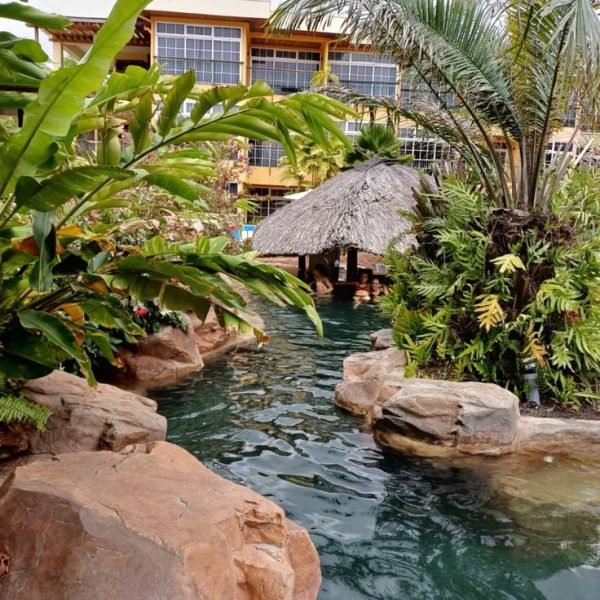
Planning Your Trip
Visa Information
Suriname has relatively straightforward visa policies, but requirements vary depending on your nationality. Many travelers from the Americas, Europe, and parts of Asia can enter visa-free or obtain a visa on arrival. It is advisable to check with Suriname’s consulate or embassy before traveling to confirm the latest visa regulations and any necessary documentation.
Best Time to Visit
The best time to visit Suriname is during the dry season, which runs from February to April and again from August to November. These months offer more comfortable weather for outdoor activities, wildlife viewing, and exploring the rainforests and beaches. The wet season, from May to July and December to January, brings heavy rains that can make travel more challenging but also enhances the lushness of the landscape.
Getting To and Around
Getting to Suriname
The primary gateway to Suriname is Johan Adolf Pengel International Airport, located about 45 kilometers south of Paramaribo. The airport receives regular flights from major hubs in the Caribbean, North America, and South America.
Getting Around
- Within Paramaribo: The capital city is compact and walkable, with taxis readily available. Renting a bicycle is also a popular way to explore the city’s charming neighborhoods.
- Beyond the City: To explore Suriname’s natural wonders and remote villages, boats are often the best mode of transport, especially for reaching rainforest lodges and riverine communities. Road travel is possible but can be limited outside urban areas, so guided tours and organized excursions are recommended for deeper exploration.
- Domestic Flights: Small domestic airlines operate flights to interior destinations, providing quicker access to remote regions for eco-tourism and cultural visits.

Accommodation
Suriname’s accommodation options cater to all types of travelers, from luxury resorts and boutique hotels to guesthouses and eco-lodges nestled in the jungle. Most visitors base themselves in Paramaribo, the capital, where the majority of hotels and amenities are concentrated.
Luxury and Boutique Hotels
For travelers looking for comfort and upscale amenities, Suriname offers several high-end hotels and resorts. Notable among them is the Royal Torarica Hotel, a long-standing icon in Paramaribo, known for its colonial architecture, spacious rooms, and excellent service. It features a fitness center, outdoor swimming pool, and an on-site restaurant, making it a favorite for both leisure and business travelers.
Another top choice is the Courtyard Paramaribo, part of the Marriott chain, which offers modern rooms, an outdoor pool, and easy access to the city’s main attractions. The Ramada Paramaribo Princess Hotel is also popular for its rooftop entertainment center and Japanese restaurant, combining luxury with unique dining experiences.
Boutique hotels like Villa Famiri Boutique Hotel provide a more intimate atmosphere with personalized service, lush gardens, and beautifully designed rooms, ideal for travelers seeking tranquility close to the city center.
Mid-Range and Budget Stays
Suriname has a good selection of mid-range hotels and guesthouses that offer comfort without the high price tag. Properties like Bij Brakke and Don Gino Apartments provide clean, air-conditioned rooms with free Wi-Fi and parking, perfect for travelers who want convenience and value.
For budget-conscious travelers, there are affordable hotels and hostels around Paramaribo and other towns such as Nieuw Nickerie and Meerzorg. Prices can start as low as $19 per night, with many offering basic amenities and friendly service.
Eco-Lodges and Jungle Accommodation
For those eager to explore Suriname’s vast rainforests and wildlife, eco-lodges provide a unique way to experience nature up close. Lodges like Jacana Amazon Eco-Lodge offer comfortable cabins deep in the jungle, guided tours, and opportunities to spot exotic wildlife. These lodges emphasize sustainability and immersion in the natural environment, making them ideal for eco-tourists and adventure seekers.
Practical Tips for Accommodation
- Most hotels in Paramaribo are within walking distance of the city’s main attractions, including the historic center, markets, and riverside.
- Booking in advance is recommended, especially during the dry season (February to April and August to November) when tourism peaks.
- Many hotels offer airport shuttle services, making arrival and departure hassle-free.
- Facilities such as swimming pools, fitness centers, and on-site restaurants are common in higher-end hotels.
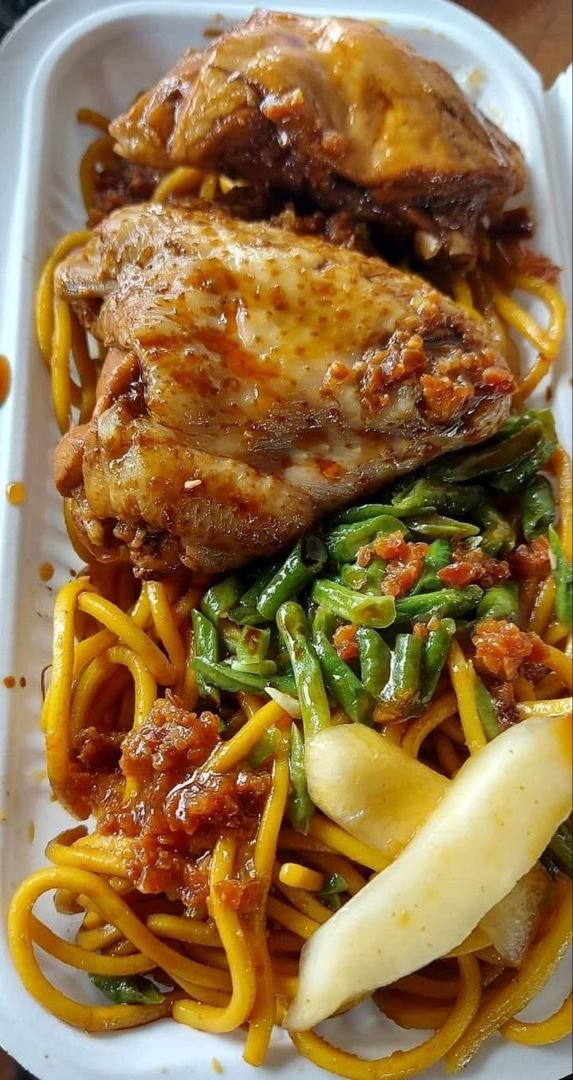
Food and Drink
Suriname’s culinary landscape is as diverse as its population, blending Indigenous, African, Asian, and European influences into a flavorful and exciting cuisine. Eating in Suriname is a journey through cultures, with dishes that reflect the country’s rich history and multicultural society.
Traditional Surinamese Cuisine
At the heart of Surinamese food are dishes that combine rice, beans, fresh vegetables, and a variety of meats and seafood. Some staples include:
- Pom: A beloved festive dish made from grated pomtajer (a root vegetable) mixed with chicken and citrus juice, baked to perfection. It’s often served at celebrations and gatherings.
- Roti: Influenced by Indian cuisine, roti in Suriname is a flatbread served with curried chicken, potatoes, and vegetables.
- Moksi Meti: A mixed meat dish featuring pork, chicken, and beef, often marinated and grilled or stewed.
- Peperpot: A slow-cooked stew made with cassareep (a sauce from cassava), meat, and spices, reflecting Maroon culinary traditions.
- Bara: A fried dough snack made from split peas and spices, popular as street food.
Street Food and Markets
Exploring local markets such as the Central Market in Paramaribo offers a fantastic opportunity to sample street food and fresh produce. Vendors sell everything from fried snacks and fresh tropical fruits to juices and sweets. Popular street eats include pastei (savory pastries filled with meat or fish) and bakabana (fried plantains).
International and Fusion Cuisine
Thanks to its multicultural population, Suriname boasts a wide array of international cuisines. You can find Chinese, Javanese, Indian, and Dutch influences in many restaurants. Sushi bars, Indonesian warungs, and Indian curry houses are common, especially in Paramaribo.
Dining Experiences
- Fine Dining: For a more upscale meal, restaurants in Paramaribo offer gourmet dishes blending local ingredients with international techniques. Many hotels have their own restaurants serving a mix of Surinamese and global cuisine.
- Casual Eateries: Small local eateries, known as “snack bars,” serve hearty, affordable meals that give a taste of everyday Surinamese life.
- Coffee and Drinks: Suriname has a growing café culture with places serving excellent coffee and fresh juices. The country also produces its own rum, which is popular locally. Bars and clubs in Paramaribo offer a lively nightlife scene with cocktails and local beers.
Food Tips for Travelers
- Try to sample dishes from different ethnic groups to get a full sense of Suriname’s culinary diversity.
- Street food is generally safe but choose busy stalls with high turnover to ensure freshness.
- Tap water is not recommended for drinking; bottled water is widely available.
- If you have dietary restrictions, larger hotels and restaurants can usually accommodate requests.

Must-See Attractions
- Saint Peter and Paul Cathedral (Paramaribo)
This iconic wooden cathedral is one of the tallest wooden structures in the Caribbean and a masterpiece of Gothic-Roman architecture. Located in the heart of Paramaribo, it was built starting in 1882 and designated a Minor Basilica in 2014. Visitors can admire its soaring spires, intricate woodwork, and beautiful stained glass windows. The cathedral remains an active place of worship and offers guided tours that reveal its historical and architectural significance.
- Fort Zeelandia (Paramaribo)
Fort Zeelandia is a historic fortress on the banks of the Suriname River, originally built by the French in 1640 and later taken over by the Dutch. The fort complex includes a two-story main building, a warehouse from the 1790s, officers’ quarters, and a guardhouse. It now functions as a museum, providing insights into Suriname’s colonial past and its strategic importance. The fort’s riverside location also offers picturesque views and a glimpse into the city’s history.
- Commewijne River and Plantation Area
The Commewijne River region is rich with colonial history and natural beauty. Visitors can explore old coffee and cocoa plantations, many of which have been preserved as cultural heritage sites. Boat tours on the river reveal abundant birdlife and lush scenery. The area also hosts Fort Nieuw-Amsterdam, an open-air museum with exhibits on the slave trade and colonial times, making it a must-visit for history enthusiasts.
- Palmentuin (Palm Garden) – Paramaribo
Located behind the Presidential Palace, Palmentuin is a serene garden filled with about 1,000 royal palm trees planted in the 1600s. It offers a peaceful retreat from the city bustle, with benches, statues, and a children’s playground. The garden is ideal for a leisurely stroll or a quiet afternoon break, especially during the warm afternoons.
- Brownsberg Nature Park
Brownsberg Nature Park is a highlight for nature lovers, offering hiking trails through tropical rainforest on a mountain plateau about 500 meters high. The park features waterfalls, creeks, and panoramic views of the Brokopondo Reservoir. It’s home to diverse wildlife, including monkeys, birds, and reptiles. The trails are best explored during the dry season when conditions are safer and more comfortable.
- Galibi Nature Reserve
Famous for its sea turtle nesting sites, Galibi Nature Reserve on Suriname’s Atlantic coast is a vital conservation area. Visitors can witness endangered leatherback and green turtles laying eggs on the beach, usually between February and July. The reserve also offers opportunities for birdwatching and experiencing indigenous and Maroon village life nearby.
- Neotropical Butterfly Park (Wanica)
Just outside Paramaribo, this park showcases Suriname’s incredible butterfly diversity. It features dozens of butterfly species native to the region and an insect museum with various rainforest insects. The park also has an exhibition hall with local art, making it a colorful and educational stop for families and nature enthusiasts.
- Jodensavanne
Jodensavanne is an archaeological and historical site that was once home to one of the earliest Jewish settlements in the Americas. Visitors can explore ruins, a synagogue, and learn about the Jewish community’s role in Suriname’s colonial history. The site offers a unique glimpse into the country’s multicultural past.
- Paramaribo Zoo
The only zoo in Suriname, located in the capital, houses many native species such as jaguars, anacondas, caimans, and tropical birds. It’s a family-friendly destination with playgrounds and shaded walking paths, providing a good introduction to Suriname’s wildlife in a controlled environment.
- Warappa Kreek (Bakkie)
This scenic creek area in the Commewijne District is surrounded by mangrove forests and historical remnants like a sugar factory with steam engines and colonial tombs. The creek is also a prime birdwatching spot, especially for species like the scarlet ibis. A private museum at Warappa Kreek offers artifacts from Suriname’s colonial era.
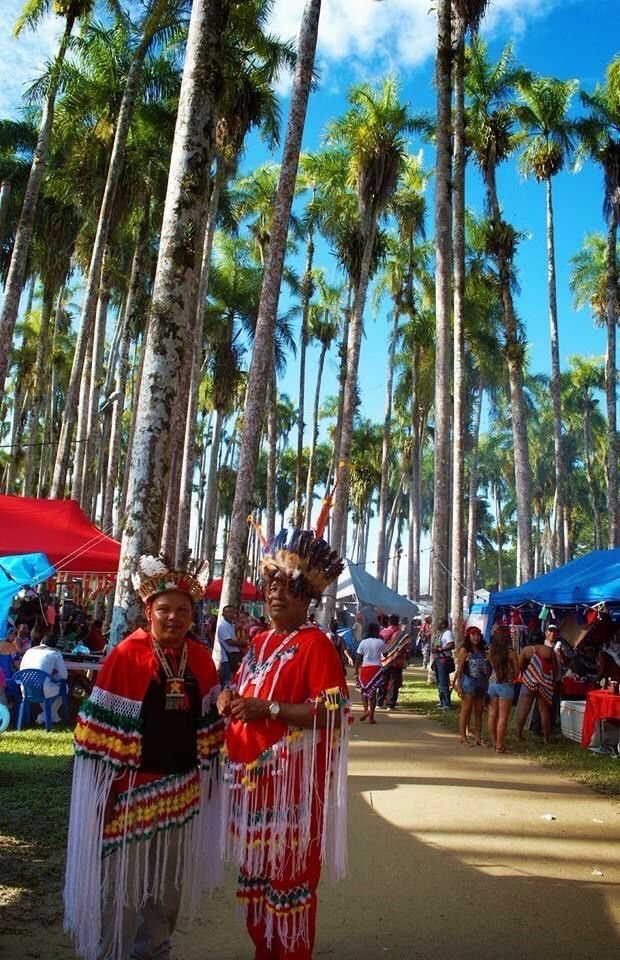
Must-Do Activities
Explore Paramaribo’s Historic Center
Walking through Paramaribo’s UNESCO-listed historic center is a must. The city’s wooden colonial buildings, colorful markets, mosques, churches, and synagogues reflect the country’s multicultural heritage. Don’t miss the Presidential Palace and the Thalia Theatre, both architectural gems. Guided city tours provide rich context and stories behind these landmarks.
Jungle Hiking and Wildlife Watching
Suriname’s vast rainforests are a playground for adventurers. Hiking in Brownsberg Nature Park or the Central Suriname Nature Reserve offers encounters with monkeys, exotic birds, and tropical plants. Guided treks often include visits to waterfalls and remote villages, allowing travelers to experience the rainforest’s biodiversity and indigenous cultures firsthand.
Turtle Watching at Galibi
Participate in guided night tours during turtle nesting season at Galibi Nature Reserve. Watching massive leatherback turtles come ashore to lay eggs is a profound wildlife experience. The reserve’s conservation efforts ensure the protection of these endangered species, and local guides provide educational insights into the turtles’ life cycle.
Boat Tours on the Suriname and Commewijne Rivers
Boat excursions are an excellent way to explore Suriname’s waterways, which are lifelines for many communities. Tours often include visits to plantations, wildlife spotting, and stops at traditional Maroon and Indigenous villages. These trips offer a blend of nature, history, and cultural immersion.
Visit Local Markets and Try Surinamese Cuisine
Engage with the local culture by visiting markets like Paramaribo’s Central Market. Here, you can sample traditional dishes such as pom, roti, and moksi meti, and buy fresh tropical fruits and spices. Food tours and cooking classes are also popular activities for food lovers wanting to dive deeper into Suriname’s culinary diversity.
Birdwatching and Photography
Suriname is a birdwatcher’s paradise with hundreds of species including scarlet ibis, kingfishers, and various parrots. Bigi Pan and Warappa Kreek are top spots for birdwatching. Photographers will find endless opportunities to capture vibrant wildlife and stunning landscapes.
Cultural Festivals and Events
If your visit coincides with local festivals, don’t miss the chance to experience Suriname’s lively celebrations. Events like the Suriname Jazz Festival, Maroon Day, and the Easter Carnival showcase music, dance, and traditional costumes, offering a window into the country’s soul.
Cycling Tours
Paramaribo and surrounding areas are well-suited for cycling. Renting a bike to explore the city’s historic streets or the plantations along the Commewijne River is a relaxing and eco-friendly way to see the sights.
Visit Museums and Art Galleries
Suriname’s museums, such as the Surinamese Museum at Fort Zeelandia and the Jodensavanne site museum, provide deeper understanding of the country’s history and culture. Art galleries in Paramaribo display works by local artists inspired by Suriname’s landscapes and multicultural heritage.
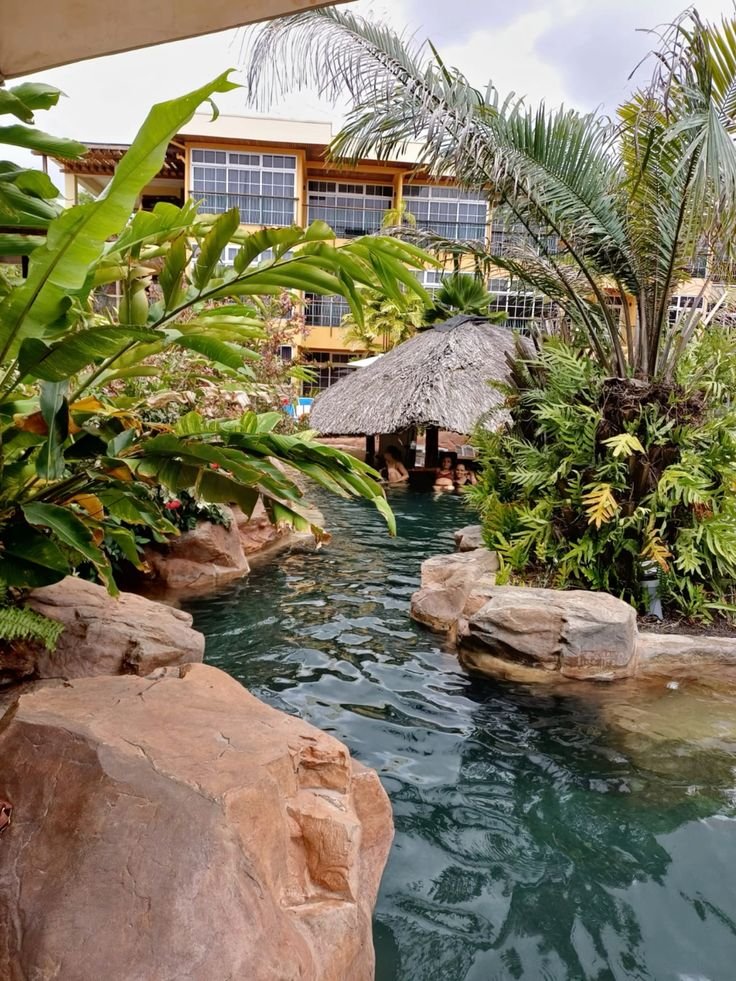
Travel Tips
Traveling to Suriname in 2025 promises an exciting adventure filled with rich culture, stunning natural landscapes, and warm hospitality. To make the most of your trip and ensure a safe, respectful, and enjoyable experience, it’s important to be well-prepared. This guide provides essential travel tips covering safety advice, local customs, and language basics to help you navigate Suriname confidently.
Safety Advice
General Safety
Suriname is generally considered a safe destination for travelers, but like many places, it has areas where caution is necessary. Petty crime such as pickpocketing and purse snatching is the most common issue, especially in busy urban areas like Paramaribo’s markets, business districts, and crowded streets. To reduce risk, avoid displaying flashy jewelry, expensive cameras, or large amounts of cash openly.
Travelers should remain vigilant in crowded places and avoid walking alone at night, particularly in less populated or poorly lit neighborhoods. Certain parts of Paramaribo, including areas like Watermolestraat and Parmentuin, are known to be sketchy after dark, so it’s wise to plan your routes and accommodations accordingly.
Transportation Safety
When moving around Suriname, opt for licensed taxis or reputable car rental services. Public transportation, including buses and minibusses (“alibis”), can be convenient but may pose safety concerns such as overcrowding or petty theft, so keep your belongings secure and stay alert6.
If you plan to drive, familiarize yourself with local traffic laws and always wear a seatbelt. Avoid driving at night due to poor road lighting and variable road conditions outside urban centers. Motorbike taxis are common but risky—riding motorcycles or motorbikes is generally discouraged for visitors due to frequent accidents.
Health and Outdoor Safety
Suriname’s tropical climate means mosquitoes and insect-borne diseases like dengue, malaria, Zika, and chikungunya are present. Use insect repellent containing DEET, wear long sleeves and pants especially at dawn and dusk, and consider prophylactic medication for malaria if advised by your healthcare provider.
When exploring the rainforest or hiking in places like Brownsberg Nature Park, carry essentials such as water, snacks, a first aid kit, and weather-appropriate clothing. Inform someone of your itinerary before heading into remote areas and consider hiring local guides for safety and cultural insights.
Emergency Preparedness
Keep a list of emergency contacts handy, including local police, medical services, your country’s embassy or consulate, and your travel insurance provider. It’s also a good idea to share your travel plans with a trusted person back home. Store important documents like your passport safely in a hotel safe or secure travel pouch, and carry photocopies or digital images instead of originals when sightseeing.
Local Customs
Respect and Politeness
Surinamese people are known for their warmth and friendliness, but it’s important to respect local customs and traditions. Dress modestly, especially when visiting religious sites such as mosques, synagogues, and churches. Removing shoes before entering homes or certain places of worship is customary.
Greetings are important in Suriname’s diverse society. A simple “good day” or “hello” in Dutch or local languages is appreciated. Surinamese culture values politeness, so using “please” and “thank you” goes a long way.
Cultural Diversity
Suriname is a multicultural society with influences from Indigenous peoples, African Maroons, Hindustani, Javanese, Chinese, and Dutch communities. This diversity is celebrated in festivals, food, and daily life. When visiting villages or cultural sites, ask permission before taking photos and be mindful of local sensitivities.
Tipping and Hospitality
Tipping is not mandatory but appreciated in restaurants and for tour guides or taxi drivers. Around 10% is customary if service is good. Surinamese hospitality often includes sharing food and drink, so accepting offers graciously is a sign of respect.
Avoiding Sensitive Topics
Politics and religion can be sensitive subjects. It’s best to listen more than speak on these topics unless you know your conversation partner well. Also, drug laws in Suriname are strict, with severe penalties for possession or trafficking—avoid any involvement with illegal substances.
Language Basics
Official Language
Dutch is the official language of Suriname and is used in government, education, and media. Most signs, official documents, and formal communication are in Dutch. Learning a few basic Dutch phrases will help you navigate daily interactions and show respect to locals.
Common Phrases in Dutch
- Hello: Hallo
- Good morning: Goedemorgen
- Please: Alsjeblieft (informal), Alstublieft (formal)
- Thank you: Dank je wel (informal), Dank u wel (formal)
- Yes: Ja
- No: Nee
- Excuse me / Sorry: Sorry
- How much does it cost?: Hoeveel kost het?
- Where is…?: Waar is…?
Other Languages
Suriname is linguistically diverse. Many people speak Sranan Tongo, a widely used creole language that serves as a lingua franca among different ethnic groups. English is commonly understood in tourist areas and among younger people. Additionally, languages such as Hindi, Javanese, and various Indigenous languages are spoken within communities.
Communication Tips
When in doubt, start with Dutch greetings and polite phrases. Surinamese people are generally patient and helpful with foreigners. Using simple English or gestures also works well, especially in Paramaribo. Carrying a phrasebook or translation app can enhance communication, particularly when venturing into rural or interior regions.
Final Tips for a Smooth Journey
Suriname offers an enriching travel experience with its blend of cultures, natural wonders, and colonial charm. By following practical safety advice—such as staying vigilant in busy areas, using reliable transportation, and protecting yourself from insect bites—you can enjoy your visit with confidence. Respecting local customs, dressing modestly, and greeting people politely will deepen your connection with Suriname’s diverse communities. Lastly, learning basic Dutch phrases and understanding the linguistic landscape will help you navigate daily life smoothly.
With these travel tips in mind, your 2025 trip to Suriname will be safer, more respectful, and more rewarding, allowing you to fully embrace the warmth and vibrancy of this remarkable South American destination.

